Chocolate Mirror Glaze – or Glacage Chocolat in French – is the most stunning of all cake glazes! Made with a simple mixture of cocoa, cream, sugar, water and gelatine, it’s used to make Mirror Cakes like this elegant Chocolate Glazed Mirror Cake with layers of chocolate cake and chocolate ganache.
No special equipment required – just a meat thermometer and strainer. (Yes, I said meat thermometer!)

Chocolate Mirror Glaze
If you’ve always wanted to but been too intimidated by the thought of producing beautiful French patisserie-style cakes, Chocolate Mirror Glaze is an excellent place to start because:
It’s much easier than you think. It calls for patience above all else (you will read the words “cool” and “fridge” a lot!);
You can use mirror glaze on virtually any cake; and
You don’t need any specialty ingredients or patisserie equipment – just a meat thermometer and strainer!
It’s a great show-off cake, one that everyone oohs and ahhs over how shiny and reflective the glaze is – just like a mirror!


What makes Mirror Glazes shiny?
The ingredient that makes Mirror Glazes so shiny is gelatine. It makes the glaze set into a glossy, thin layer of what is essentially chocolate jelly. That might sound slightly unappealing but when executed properly, it functions as a very, very thin layer of soft jelly encasing a frosting or mousse of some sort underneath.
Since gelatine liquifies when heated and the glaze is so thin, the warmth of your mouth causes the glaze to instantly melt in your mouth when you eat it. So you don’t perceive a “jelly” texture and barely notice it is there!
In fact, I consider Mirror Glazes to be all for show and nothing more, and this is really the concept behind it. It will make a cake look impressive, but like most things in life, it’s what’s underneath that really matters!
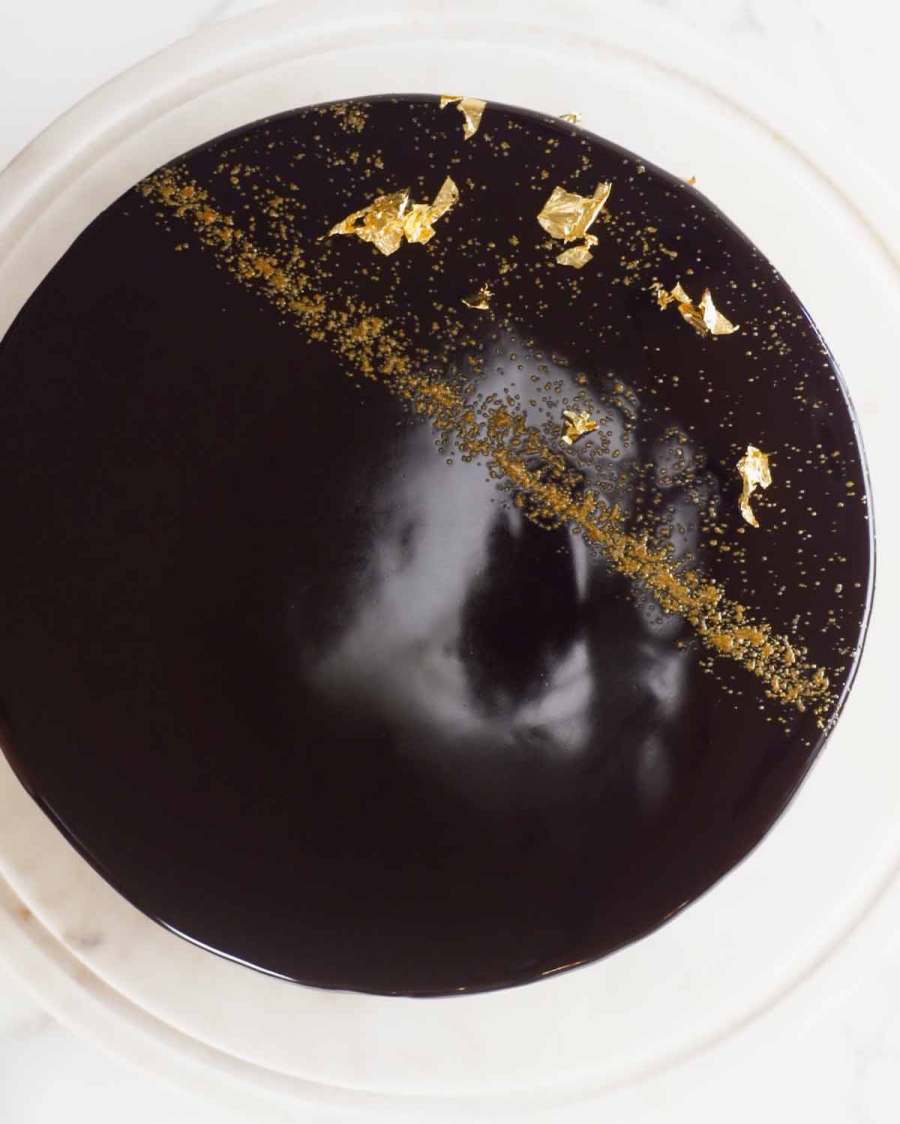
What is Mirror Glaze made of?
A classic Chocolate Mirror Glaze is made of gelatine, water, cream, sugar and cocoa powder.
Some recipes use melted chocolate and condensed milk, but they aren’t as nice to eat. They make a yield a thicker, less elegant Mirror Glaze that’s also overly sweet. More on alternative Mirror Glazes below.

Gelatine – while professional patisseries will use leaf gelatine, I opt for powdered gelatine because it’s more standardised globally, affordable and still yields perfect results. Leaf gelatine comes in different grades and strengths, and also economical ones are not always reliable (as I found out during the creation of this Mango Cheesecake!). Powder is easier and safer;
Cream – pure cream is best, but thickened and heavy cream work as well. Full-fat power needed here – this is not the time to muck around with low fat alternatives!!!
Cocoa powder – Dutch process(ed) cocoa powder is best, for intensity of flavour and a deeper dark colour. However, everyday standard cocoa works 100% perfectly here and is an excellent, more economical alternative; and
Sugar – just ordinary white sugar.

No to condensed milk and melted chocolate in Mirror Glazes!
Some recipes call for melted chocolate and condensed milk instead of cream. This makes a thicker layer of mirror glaze which helps disguise more blemishes on the surface of the cake. But it’s not as nice to eat because it makes the glaze thicker than ideal (more like 4 – 5mm), so you perceive a bit of jelly texture.
Also it starts to lose its shine after about 36 hours – whereas this Mirror Glaze stays shiny for days and days!
The no-condensed milk recipe I present here was taught to me by a professional pastry chef who has worked in some of the finest restaurants in Sydney. It’s a more technically perfect method that creates a thin 2 – 3 mm layer (as it should be!) that literally dissolves in your mouth.

Mirror glaze actually isn’t hard to do if you follow some key tips that will ensure success, even if you’re a first timer. There are also some troubleshooting tricks to know which I have deployed many times!
More than anything, Mirror Glazed Cakes require patience. You will read the words “cool” and “refrigerate” a lot in the following sections!
How to Mirror Glaze a cake
In a nutshell, here is how to glaze a Mirror Cake:
Frost the cake with ganache or buttercream so it is as level and smooth as possible – see separate tutorial How to Make Frosting and Ganache Smooth on Cakes ;
Make the mirror glaze then let it cool so it doesn’t melt the frosting;
Pour the glaze over the cake and be mesmerised by the glistening curtain of chocolate that cascades across and down the sides of your cake!
Transfer the cake without messing up the glaze; and
Fix any blemishes using a couple of handy tricks.

Part 1: Frosting the cake
A flat, even cake surface is essential for beautiful smooth, flawless mirror glazes because the shiny nature of the glaze makes bumps and moulds highly visible. See this separate post for my directions: How to Make Frosting Smooth on Cakes.
Here’s a little preview of the technique: Piping the frosting on each layer and on the sides then spreading is the most efficient and effective way (another handy pâtissier technique I recently learned!):

No crumb coating required
Using this snail piping technique to apply the frosting or ganache means you don’t need to do a crumb coat first. Crumb coating is a cake decorating technique where a thin smear of frosting is applied all over the cake seal in stray crumbs before coating with a proper thick layer of frosting. It makes it easier to spread the frosting smoothly.
Best cake and frosting for Mirror Glazes
I’m using my Chocolate Cake with a chocolate ganache because it’s an elegant, classic combination with true wow-factor when combined with the mirror glaze – both visually when you slice it, and in flavour.
Cakes suitable for Mirror Glazes
You can use virtually any cake that has some density and stability. I would not recommend really airy, soft or fragile cakes (like Chiffon Cakes) because they will be difficult to handle and prone to easily denting.
A mousse cake or a mousse layer is one that could be used without using frosting because the surface is already soft and smooth. But the mousse would need to be hard chilled overnight.
Frosting base for Mirror Glazes
Frosting is required to make the surface level and smooth for a flawless mirror finish. If you pour the Mirror Glaze straight on to a naked cake, it will be bumpy and grainy looking, and the glaze will also soak into the cake.
Any frosting that can be spread smooth to cover bumps on cakes, firms up when chilled and is dense enough so chocolate mirror glaze won’t sink or absorb into it when it is poured over.
Hence a fluffy meringue frosting, say, is no good. Nor is a light and fluffy mascarpone frosting. However, a buttercream frosting or chocolate ganache is perfect.
Here are some suggestions for frostings that will work under a Mirror Gaze:
Chocolate Ganache – classic and elegant, this is what I used;
Chocolate Buttercream or Vanilla Buttercream (this is in the Vanilla Cake recipe) – or any other Buttercream you want;
My secret, less-sweet Fluffy Vanilla Frosting – essentially a less sweet, 100% smooth Vanilla Buttercream that firms up like butter when chilled;
Swiss Meringue or French Meringue Buttercream.
How much frosting do you need?
As much as you would ordinarily use to fill and cover the sides and surface of a cake. Frosting recipes should provide that information!

How smooth and level the cake should be for Mirror Glaze Cakes
No matter what you are pouring the Mirror Glaze over, it needs to be as smooth and level as humanly possible because the light reflected by the glaze will emphasise imperfections that you never normally notice with regular cakes.
Check your cake by looking at it from the side. Little smears like you see on the side of the cake below don’t matter – the glaze will hide those as it runs over it. But what does matter are “hills” and dents. The light bouncing off the shiny glaze makes even the smallest mounds look so much bigger than they are! Mountains out of mole hills indeed …

Part 2: Making the Mirror Glaze
Making a mirror glaze is very easy IF you follow a few key tips that make all the difference between success and lumpy failure:
How to avoid gelatine lumps and bubbles in the glaze; and
How to achieve the perfect thickness and temperature so that when you pour it, it’s not too thin or thick, and doesn’t melt the ganache.
I’ve made all these mistakes, so you don’t have to!
Bloom gelatine powder
Gelatine is what makes Mirror Glaze shiny. It’s very simple to use and not expensive either.
There’s no need for leaf gelatine. Powdered gelatine works just fine and it’s readily available everywhere.

1. Bloom gelatine – put a small amount of water in a small bowl then sprinkle gelatine over.
2. Mix – it will set into a thick paste. Leave for 5 minutes so the gelatine crystals absorb the water. This is called blooming gelatine and it allows the gelatine to dissolve smoothly into mixtures. If you just added the powder straight into the glaze, you’d end up with lots of lumps.
Making the mirror glaze

1. Cocoa and water first – In a saucepan, whisk the cocoa powder and water to make a slurry / paste. I found this to be the easiest way to dissolve cocoa powder without whisking/mixing too much (which will create bubbles and ruins the finish of the glaze).
2. Then cream and sugar – Next, mix in a bit of cream to loosen the mixture, then add the remaining cream and all the sugar. Do minimal stirs, enough to just incorporate the cocoa slurry into the cream;
3. Boil – Bring to boil to dissolve the sugar, then take it straight off the stove;
4. Dissolve gelatine – Drop the gelatine in (it will have solidified into a rubbery disc);
5. Stir GENTLY – Gently stir to dissolve the gelatine lump. Do not stir vigorously and do not use a whisk, or you’ll create bubbles in the glaze which will tarnish the perfect finish! It will take a minute or two of stirring but it will dissolve.
Professional pâtissiers use a stick blender / immersion blender. By keeping the head and blades under liquid, it avoids bubbles getting into the mixture. However, this only works if you’re making large enough batches of glaze so the blender head is completely submerged. For a single cake, you’d need to use a milkshake container or large mason jar, then transfer into a saucepan. Honestly, just easier to mix cocoa and water first!
6. Glossy! The glaze should be shiny and glossy at this point, and hopefully bubble free. If you have bubbles, don’t fret! We can fix it in the next step. If you see a whitish foam on the surface, that’s ok too and is easy to deal with; just leave it for now.
Strain and cool

1. Strain – Slowly strain the liquid into a bowl, positioning the strainer such that you minimise the distance the liquid falls from the saucepan into the strainer, and also from the base of the strainer into the bowl. This will reduce the risk of bubbles being created during the straining process.
2. Cover & cool – Cover the mirror glaze with cling wrap, pressing so it touches the surface to prevent a skin forming. When you peel off the cling wrap once the Mirror Glaze is cool, it will peel off any white foam that I mentioned above not to worry about.
3. Cool to 30°C / 86°F – Leave to cool on the counter for 2 hours or until it reaches 30°C / 86°F. This is the perfect pouring temperature so it blankets the cake smoothly without drips, won’t melt the ganache and sets in a thin 2 – 3mm layer – the perfect thickness for a mirror glaze.
If the glaze is too hot, it will melt the ganache and slide off the cake.
If the glaze is too cold, it won’t spread smoothly and you’ll end up with drips on the side and lines from the pools of chocolate on the top.
You don’t need a fancy candy thermometer. Just use your trusty old meat thermometer!
4. Strain into jug – Once it reaches the target temperature, strain it into a jug ready for pouring over the cake. The purpose of this step is to remove any residual bubbles, any little bits of skin that formed while cooling, and any gelatine lumps that may have formed if it wasn’t properly dissolved.
Position the strainer and tilt the jug so you minimise the distance the liquid falls so you don’t create any bubbles. I manage this on my own, but it’s easier if you get a helping hand!
Important: Only strain into jug just before using
Do not transfer the mirror glaze into the pouring jug until just before using. Doing this too far in advance creates too many unexpected variables which may trigger the need / irresistible desire to stir. That action will create bubbles. Also you will get a skin on the surface which creates unsightly lumps in the glaze.
Part 3: Glazing!
Checklist before you start pouring to ensure you nail it!
Your glaze is at 30°C/86°F (give or take 2 degrees);
You strained into the pouring jug just before using it; and
The cake was chilled for least 30 minutes.
You don’t need to possess an expert’s hand with the pouring action. You can start and stop pours and it will still end up smooth, though you will get the most flawless finish if you can do it in one motion.

1. Place cake on rack – Transfer the cake to a rack using 2 x kitchen knives or long palette knives (or one of each!). Slide them under the cake, then lift and shift (see below for steps – I use this same method after glazing);
2. Place rack on tray – Set the rack with the cake on a tray to catch the excess glaze drips;
3. Pour! Starting in the middle of the cake, pour in an expanding spiral motion outwards towards the edge of the cake, so the glaze spreads across the surface and down the sides. Pour with confidence! Don’t hesitate or do a thin stream. You want a steady pouring stream so you get a curtain of chocolate coating the sides of the cake rather than piddly little drips!
Do not touch the glaze once it is poured – anything that comes into contact with the glaze will leave a mark!
TOP TIP: Try to do it in one motion – that is, once you start pouring, don’t stop until all the sides are covered. This is the best way to ensure you get a perfect, flawless surface. If you need coat a patch you missed on the side, just pour down the edge of the cake only, to minimise risk of faint “puddle” lines on the top of the cake. Don’t worry, the surface will still be flat.
4. Transfer before it sets! The mirror glaze will start to set after about 10 minutes. So transfer the cake to a rack before it sets otherwise you’ll get little drags on the edge of the base where the you pick it up (the glaze sticks to the rack). See next section for how to transfer the cake.

Once a Mirror Glaze is set … don’t touch!
Mirror Glazes take 5 to 10 minutes to set. It sets quite quickly because we’re pouring it over a fridge cold ganache or other frosting.
It will feel like a soft jelly. It will not crust over like typical glazes (eg. like the Lemon Glaze in this cake).
To preserve the flawless, shiny glaze, avoid touching the mirror glaze once it has been poured. If you touch it once it has set, you will leave a faint fingerprint mark on it.
Part 4: Moving the mirror glazed cake
The most-asked question when I shared a preview of this cake was, “How do you move it!?!?!“
I use the same method I used to move the cake on to the rack for glazing once the ganache is on, to shift the finished glazed cake to its serving platter: Using two palette or kitchen knives. Here’s how:

Palette knives or kitchen knives – Use either 2 long palette knives or 2 kitchen knives (or one of each, as I do!). Slide them under the cake about 1/4 of the way through – one from the left and one from the right;
Lift them at the same time then move the cake onto the rack/platter;
Push off with a 3rd knife – Once the cake is on the rack/platter, leave the shifting knives in place under the cake. Now get a butter knife or small palette knife to help slide each of the shifting knives out neatly without making the ganache/frosting/mirror glaze untidy; and
Voila! Tidy edges! (That’s just a smear on the cake platter you see in the above step photos.)
PRO TIP: Move cake ASAP
Move the mirror glazed cake straight after pouring the glaze on, before it sets. Otherwise the glaze around the base of the cake will start to set and stick to the rack. This will cause dragged, untidy bits around the base of the cake when you move it.
Part 5: Tidying up blemishes
Tidying up blemishes is a useful trick to have up your sleeve with Mirror Glazed Cakes because although we are after all seeking perfection here, life doesn’t always go to plan. For example, a poof of wind blowing through the house causing a single dog hair to settle on the otherwise flawless surface of the cake (yes, I’m glaring at YOU, Dozer!).

So here are some tips on how to rectify Mirror Glaze blemishes:
Wait until the glaze is set – Firstly, wait until the mirror glaze is set before attempting repair work otherwise you can make the blemish worse as the glaze is still runny;
Use excess mirror glaze left on the catching tray or leftover in the jug to patch up dents and crevices;
Smear it on / in the problem areas;
Heat a palette knife or butter knife with a blow torch, gas lighter, or a gently over a low stove – just briefly. Mirror Glaze melts super easily – you don’t need it to be hot. If it sizzles on contact with the mirror glaze, it’s too hot!
Wipe across messy patched up area – don’t be too slow and don’t do it repeatedly otherwise you may melt the ganache underneath!
Voila! It’s (practically) flawless!
Extra tips:
Blow torching directly (or gas lighter) – mirror glaze melts easily, so just lightly waving the very tip of the blow torch flame over a blemish will smooth out any dents. It does leave a slight blemish so you won’t have a pure flawless finish, but at least it is subtle and smooth. Don’t get too enthusiastic with the blow torch otherwise you will melt off the mirror glaze and/or the ganache underneath!
Decorations! Never hesitate to use a sprinkle of gold dust or a strawberry or gold leaf to strategically cover up blemishes!
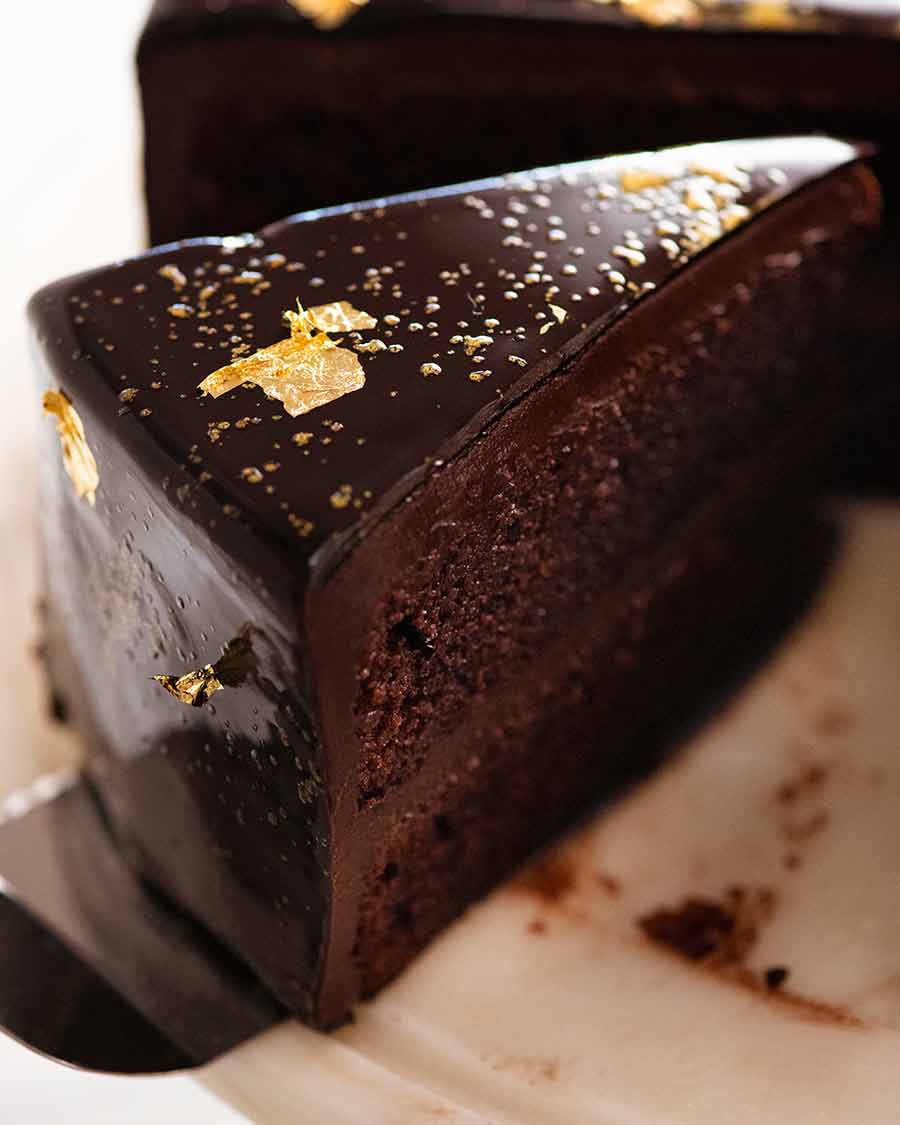
This is what I used to decorate my cake: Gold leaf and gold dust, purchased from Woolworths in Australia (it’s our equivalent of Walmart in the US and Sainsbury’s in the UK). And no, they’re not there for the purpose of covering a million imperfections 😂

Freezing and refrigerating Mirror Glaze
It’s worth mentioning that the Mirror Glaze itself can be made ahead and refrigerated for up to a week or even frozen. It just needs to be reheating gently then stirred very gently until it is once again smooth and pourable, and then cooled to 30°C/86°F as required by the recipe.
Reheated Mirror Glazes will get bubbles in them in the stirring process. It’s inevitable, no matter how gently you stir them. But removing them is easy – just pass a blow torch or even a lighter lightly across the surface of the mirror glaze where the bubbles are, and watch in wonder as the bubbles disappear!
Also, the final strain of the Mirror Glaze into the pouring jug will strain out any nasty bubbles.

Storing Mirror Cakes
Once the Mirror Glaze has been applied, they seal the cake completely so they can be stored in the fridge and patisserie windows without having to cover them. Very appealing for practical purposes!
However, all too often, patisseries and cake makers prioritise the shelf life benefits and make the mirror glaze too thick and too rubbery. Hence the beauty of homemade – so we can make it properly!
Mirror Cakes don’t even need refrigeration as long as it’s cool – the glaze melts in warm temperatures above around 25°C/ 77°C. Because it’s been really cool/cold here lately in Sydney while I’ve been shooting/testing out this recipe ready for sharing, I’ve just kept it under a cake dome on the counter.
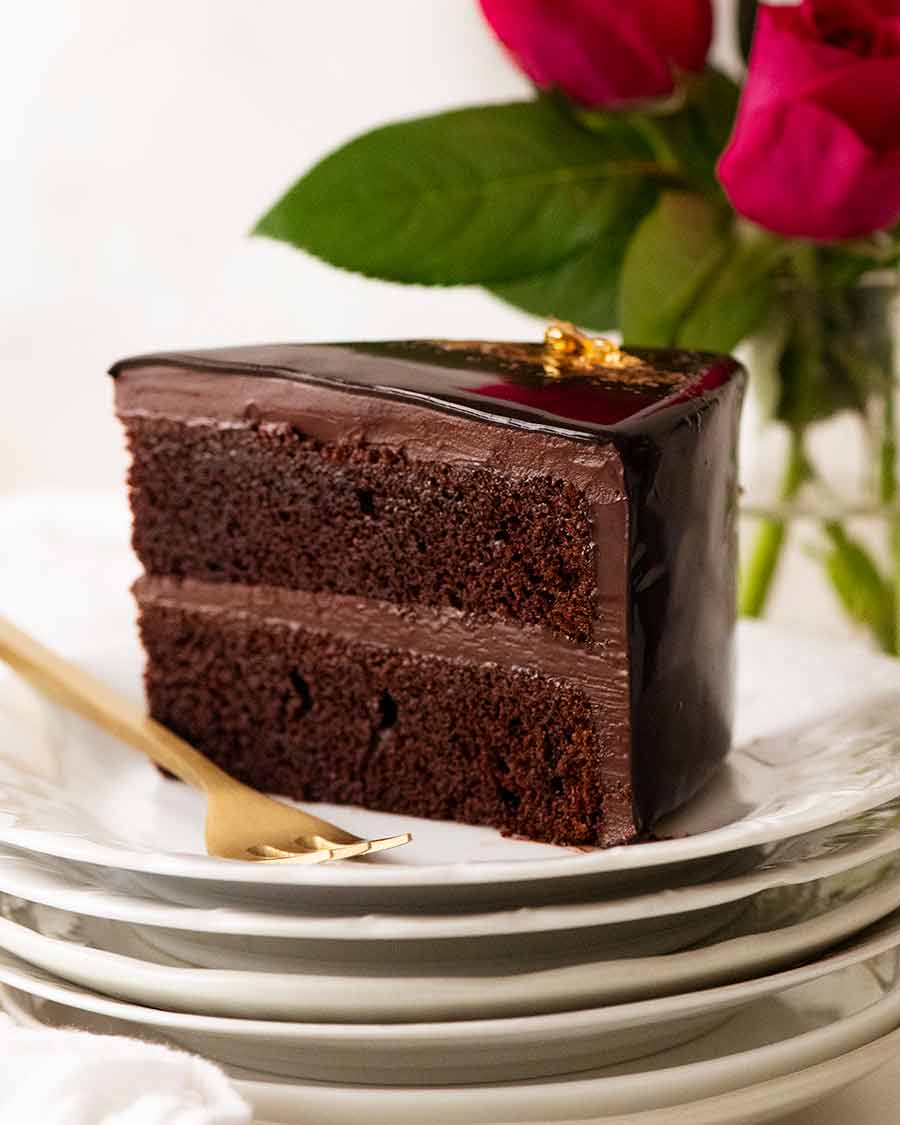
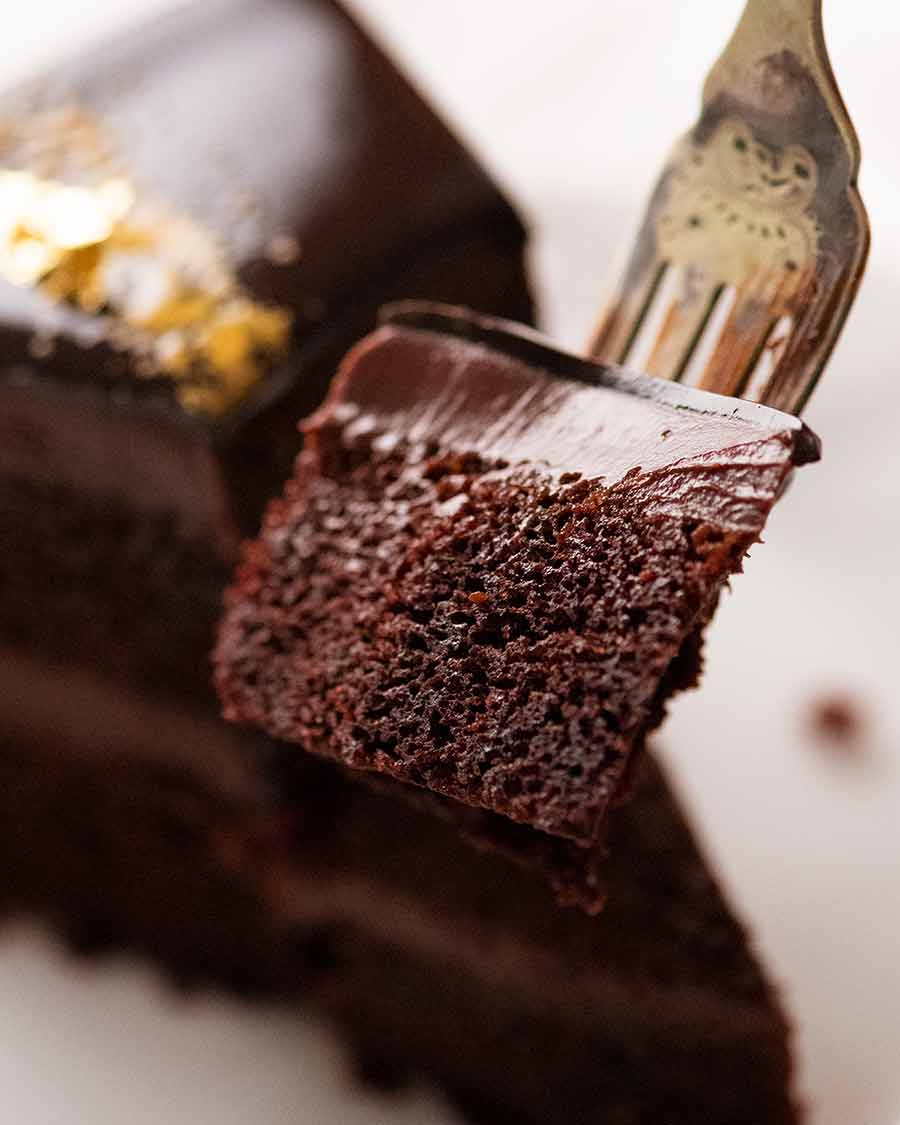
And in closing …
And with that – I have now shared with you everything I know about Mirror Glazes!!
I know that’s an enormous amount of information, but the actual execution of a Mirror Glaze is not that hard. It just takes patience – lots of cooling / refrigeration steps.
For me personally, this has been the single most well received cake by friends and family in the 6 years since I started this website. Not just for how professional and impressive it looks, but also for the flavour and how it eats. It looks so sinfully rich and yet it is not – because the Mirror Glaze is wafer thin, and the ganache layer is not that thick either.
And here’s some final words of encouragement I have to offer: So what if it’s not perfect?? Even if yours is a bit bumpy, the glaze will still be so shiny. Far more shiny than you can achieve with any other glaze or frosting. And more importantly, it is still going to taste 100% amazing! – Nagi x
Watch how to make it
Hungry for more? Subscribe to my newsletter and follow along on Facebook, Pinterest and Instagram for all of the latest updates.

Chocolate Mirror Glaze
Ingredients
- 1 x 20cm / 8" chocolate cake (2 layers) (Note 1)
- 2 batches Dark Chocolate Ganache (Note 2)
Gelatine for glaze:
- 2 1/2 tbsp water (just cold tap water)
- 4 tsp gelatine powder (Note 3)
Mirror Glaze:
- 2/3 cup water
- 2/3 cup cream , pure / regular whipping cream, better than thickened/heavy cream (Note 4)
- 1 cup cocoa powder , unsweetened, sifted (preferably dutch processed, Note 5)
- 1 cup + 2 tbsp white sugar , caster/superfine (Note 6)
Decorating (optional, as pictured)
- Gold dust and gold leaf , optional decorations (Note 7)
Instructions
Cake and Ganache Frosting preparation:
- Refrigerate cake layers for at least 1 hour until well-chilled (for easier handling). Then trim cake to make it level and frost cake with chocolate ganache so it's smooth and level (follow the tutorial in this post: How to Frost Cakes Smoothly).
- After the ganache is smooth and level, refrigerate for at least 1 hour before coating with Mirror Glaze.
Make Mirror Glaze:
- Bloom gelatine: Place water in a small bowl. Then sprinkle gelatine across surface, mix just so all the powder is wet. Leave for 5 minutes – it will become like a rubber consistency. (This is called "blooming gelatine".)
- Whisk cocoa and water: Place cocoa and water in a medium saucepan then mix until virtually lump-free. It will be like a paste.
- Add cream and sugar: Add a splash of cream to cocoa mix and stir. It will loosen up. Add remaining cream and sugar, then GENTLY continue to mix to combine. Do not mix vigorously and do not use a whisk (Note 7).
- Bring glaze to boil: Turn stove onto medium high heat. As soon as it comes to the boil, remove from the stove.
- Dissolve gelatine: Add gelatine lump, then GENTLY stir until it dissolves and you have a smooth glossy glaze. (There may be some white foam, that's ok.)
Cool & Strain Mirror Glaze:
- First straining: Using a shallow bowl and small fine mesh strainer, strain the glaze into a bowl. Pour and position the strainer so the glaze falls the smallest distance possible. If you pour from a height, this creates bubbles = bad!
- Bubble check: Twist the bowl back and forth between your hands rapidly. This will make any bubbles rise and gather in the centre. If you see bubbles, see "Note 8: Bubble Troubleshooting".
- Cool glaze: Cover with cling wrap, pressing the cling wrap onto the surface of the glaze to prevent a skin from forming. Cool on the counter for 2 hours until it reaches 30°C/86°F. See Note 9 for overnight refrigeration.
- Second straining: Just before pouring over the cake, strain the glaze into a jug. As before, tilt the jug and strainer as you pour the glaze in to minimise the distance the glaze falls.
Glazing!
- Transfer cake to rack: Remove cake from fridge, transfer onto a rack. (See Note 9 for how I do it.) Place rack on a tray to catch excess glaze.
- Pour over mirror glaze: Starting at the centre of the cake, pour the glaze on, moving in an expanding spiral motion gradually towards the outer edge of the cake, to make the glaze spread across the surface and drape like curtain down the sides. For the most perfect surface, try to do it in one motion without breaking the pour. Pour with confidence in a thick stream rather than a thin drizzle (which might set too quick and leave drips).
- Ensure all sides are fully coated – if not, quickly do a little pour down the sides to coat the naked patches.
- Transfer cake to platter: Before the mirror glaze sets (takes ~10 minutes), move the cake to a cake platter (Note 9 again for my cake-shifting method).
- Fix blemishes – Use excess glaze on the tray and in the jug to fill gaps and tears. Then smooth over with a warmed palette knife (either lightly warm with a blow torch or dip into warm water and wipe). See video for demo.
How to Slice Cake Cleanly with Neat Layers:
- Fill a tall jug with warm tap water. Dip a knife in, then wipe dry. Make one slice into the cake.
- Clean knife, dip in warm water and dry again. Make your second cut to get your wedge. Pull wedge out and marvel at the perfect layers before continuing to cut more slices! See notes for storage.
Recipe Notes:
- The glazed cake can remain on the counter if the room temperature is 22°F/72°F or lower (mirror glaze melts when too warm). Otherwise, refrigerate – you don’t need to cover an uncut cake because the mirror glaze seals it!
- Using the Chocolate Cake, this Mirror Glaze Chocolate Cake is perfect for 4 days, and still excellent on Day 6 (the cake is really moist).
- The Mirror Glaze will remain shiny and sparkly for days – unlike ones made with condensed milk which lose their shine after a day or so.
Nutrition Information:
Let them eat cake! 8 more classic cakes
Life of Dozer
No chocolate for you Dozer. And none of my Beef Pho either!!

OK fine, you can have ONE noodle!
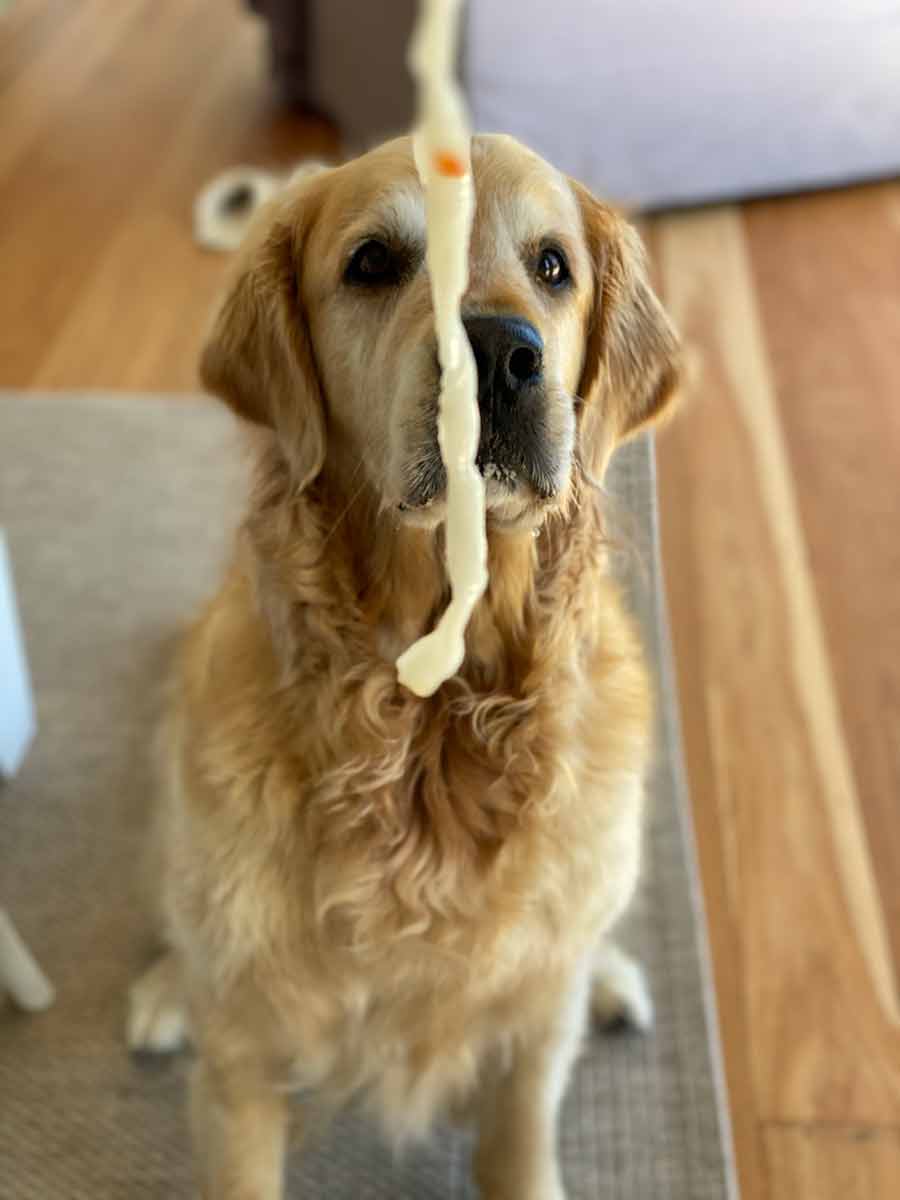



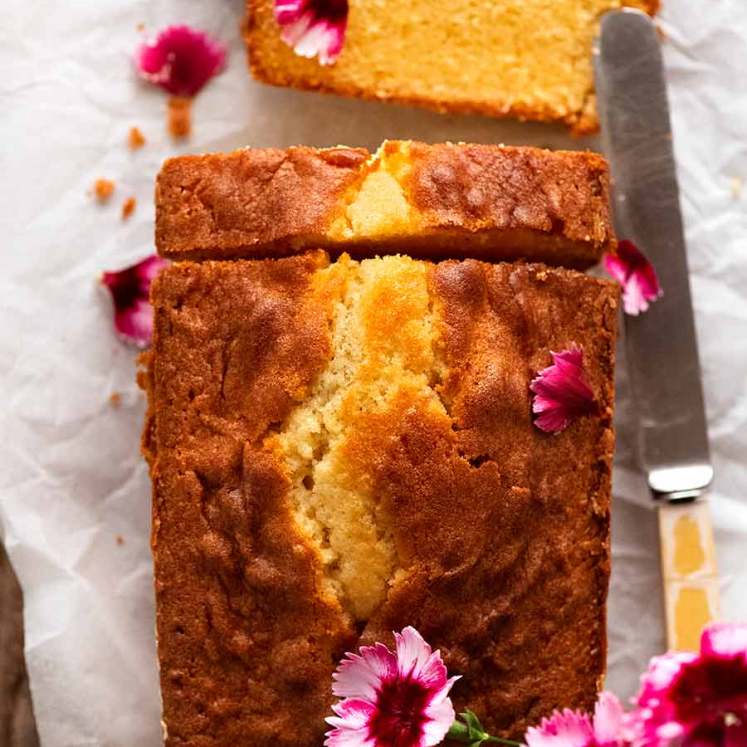




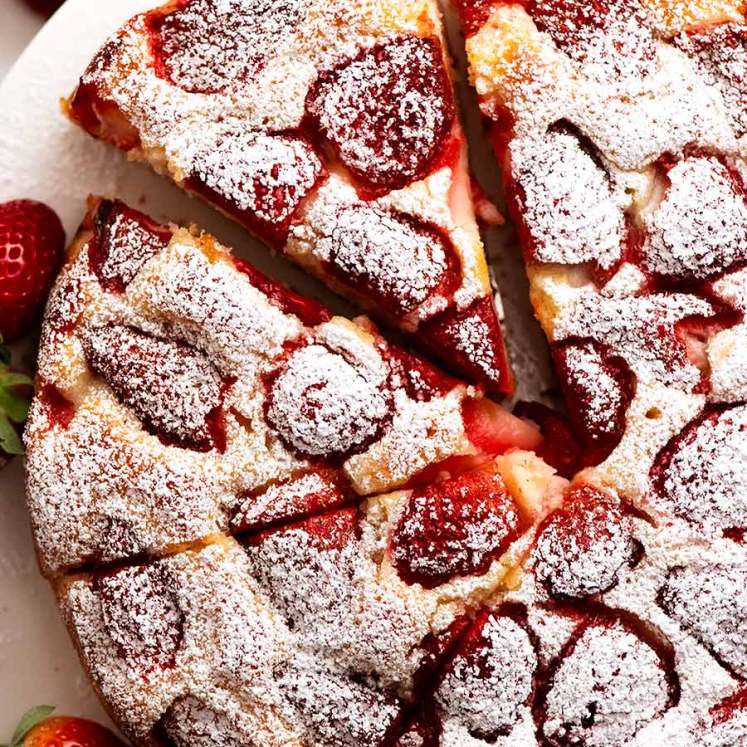
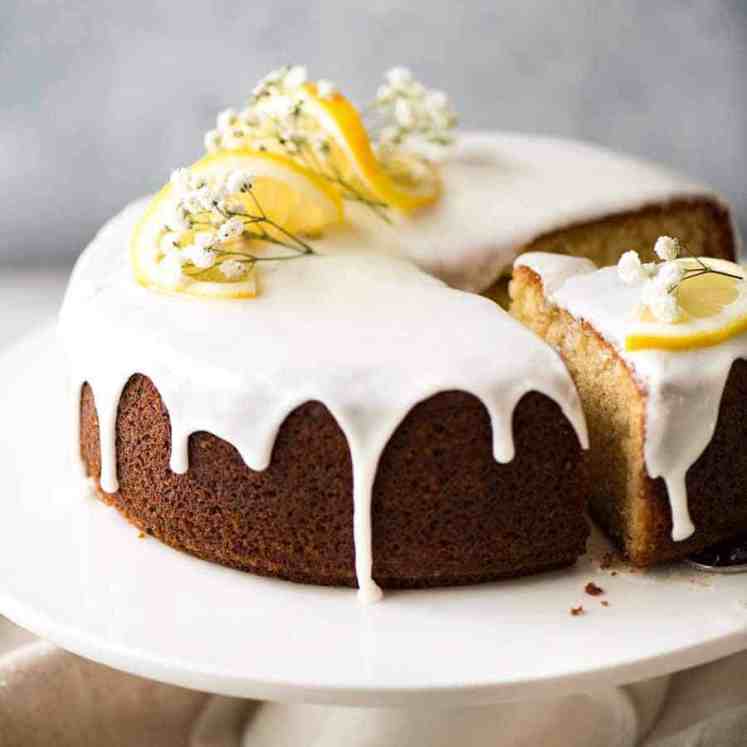


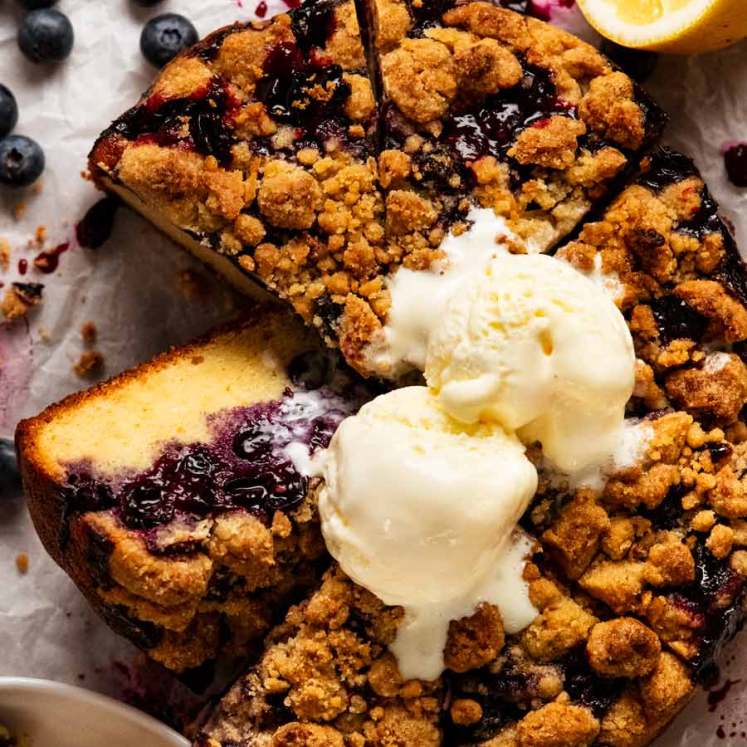
Excellent notes and instructions, thank you Nagi. Note 9; Moving the cake, I would recommend using a small thin cake board under the cake. Use the same size board as your cake for ease of transfer to and off the rack when glazing. It’s much easier and supportive when sliding the knives under the cake and removing once glazed and transferred to your presentation plate or board.
Have made this one a few times now. Perfect for the adult birthday parties when you really want to impress.
Also the ultimate flex at the school bake sale!
this cake tasted awful,it tasted like bird poo
Excellent recipe and instruction. Just worth noting that in the US all powdered gelatine is not the same bloom strength. My first glaze didn’t set. With a little research I realized my brand had a 130 bloom. I got some Knox brand (200 bloom), and it worked beautifully.
Delicious chocolate cake, made for my son’s birthday.
Thanks for making beautiful food so achievable! You’re my go to… I’m always telling the kids “It’s one of Nagi’s recipes”.
Hi, absolutely loved this mirror glaze it worked perfectly on my mousse cake. I was wondering if you have a recipe for a red mirror glaze?
I love your recipes, you’re my absolute go-to for anything fancy. Always beautifully reliable and easy to follow. Just made your chocolate cake with ganache and mirror glaze for the first time, and it came out almost perfect – so happy! Thank you for everything 🙂
I made this last night to go on a mousse layer cake, and it worked perfectly! My cake needed to be frozen to glaze, so I poured it on at 36 celsius and then left it to defrost in the fridge.
Thanks so much for a fantastic recipe.
Hi
Lovely recipe. Just wanted to know if we can use the mirror glaze on the cake and then deep freeze the cake . Will the finished cake thaw out properly? Thank you.
Thanx so much for this amazing 5 star recipe! I was looking for a reliable site that could provide my sister and I with good recipes for chocolate ganache and mirror glaze because we had to make a fancy 90th birthday cake. Thankyou! The recipes were amazing and really looked nice!!
Hi, how do I use Gelatin Sheet for this recipe?
Can I use Agar Agar? If so, how much?
Thanks for sharing! Does the mirror glaze firm up, then stay a bit soft once refrigerated?
Hi Nagi. I LOVE your website and book and have never had a fail following your instructions. I want to use a white colour mirror glaze so I can tint it to make an ocean themed cake. Do you have a recipe for it? Or alternatively can I still substitute condensed milk for cream in a white chocolate mirror glaze? Thanks Nagi
This looks amazing. Can you make this for Mother’s Day celebration?
Brilliant, so thorough..you did not miss a beat.
Question: how much gelatin do you use for the glaze? An entire packet, a teaspoon…?
After a superficial, minor baking disaster, I turned to a layer of ganache and mirror glaze to cover my cake. The helpful instructions and clear recipe ensured that it worked for me first time. The results were outstanding.
For those who have gelatine leaves in the cupboard rather than gelatine powder, I used 2 leaves gelatine for every 1 tsp of powdered gelatine and the results were perfect. Thank you, Nagi!
I followed these instructions to the letter. However, I left it too long at room temp and the temp was around 75F. I warmed it slowly in a Bain Marie to 95 ish and strained the second time and allowed to cool. I poured at about 87F and it worked perfectly. Very happy with the result. Thank you for the very complete guidance and tips.
I have yet to taste it, but the mirror glaze is super.
Hello! Your recipe absolutely perfect!!! Love it. Do you have a recipe for a colored mirror glaze? Am I able swap the cocoa powder for white chocolate?